Related Research Articles

Boulogne-Billancourt is a wealthy and prestigious commune in the western suburbs of Paris, France, located 8.2 km (5 mi) from the centre of Paris. It is a subprefecture of the Hauts-de-Seine department and thus the seat of the larger arrondissement of Boulogne-Billancourt. It is also part of the Métropole du Grand Paris. Boulogne-Billancourt includes two large islands in the Seine: Île Saint-Germain and Île Seguin. With a population of 121,334 as of 2018, it is the most populous commune in Hauts-de-Seine and most populous suburb of Paris, as well as one of the most densely populated municipalities in Europe.

La Femme Nikita, also called Nikita in France, is a 1990 French-language action thriller film written and directed by Luc Besson. The film stars Anne Parillaud as the title character, a teen criminal who is convicted and sentenced to life imprisonment for murdering policemen during an armed pharmacy robbery. Her government handlers fake her death and recruit her as a professional assassin. After intense training, she starts a career as a killer, where she struggles to balance her work with her personal life. She shows talent at this and her career progresses until a mission in an embassy goes awry.
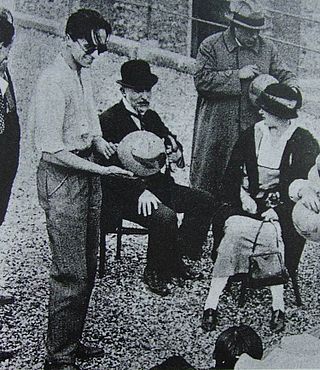
René Clair, born René-Lucien Chomette, was a French filmmaker and writer. He first established his reputation in the 1920s as a director of silent films in which comedy was often mingled with fantasy. He went on to make some of the most innovative early sound films in France, before going abroad to work in the UK and USA for more than a decade. Returning to France after World War II, he continued to make films that were characterised by their elegance and wit, often presenting a nostalgic view of French life in earlier years. He was elected to the Académie Française in 1960. Clair's best known films include Un chapeau de paille d'Italie, Sous les toits de Paris, Le Million (1931), À nous la liberté (1931), I Married a Witch (1942), and And Then There Were None (1945).

Anatoly Mikhailovich LitvakOBE, better known as Anatole Litvak, was a Ukrainian-born American filmmaker who wrote, directed, and produced films in various countries and languages. He began his theatrical training at age 13 in Petrograd, Russia.

Lady Paname was a 1950 French comedy film directed and written by Henri Jeanson and starring Louis Jouvet, Suzy Delair, Henri Guisol and Henri Crémieux. It tells the story of a young female singer who tries to become a star in the music hall world of the 1920s and falls in love with a composer. It was shot at the Boulogne Studios in Paris. The film's sets were designed by the art director Jean d'Eaubonne with costumes by Georges Annenkov.
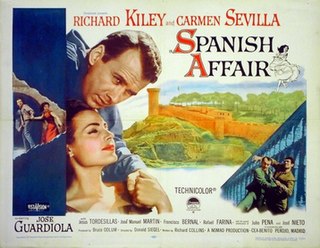
Spanish Affair is a 1957 American–Spanish co-produced drama film directed by Don Siegel and Luis Marquina. It features Carmen Sevilla, Richard Kiley and José Guardiola. It was shot at the CEA Studios in Madrid. The film's sets were designed by the art directors Tambi Larsen and Hal Pereira.

The Paris Waltz is a 1950 French-Italian historical musical film directed by Marcel Achard and starring Yvonne Printemps, Pierre Fresnay and Jacques Charon. It portrays the life of the nineteenth century composer Jacques Offenbach. It was shot at the Billancourt Studios in Paris. The film's sets were designed by the art director Robert Clavel.
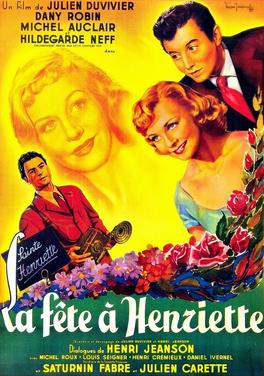
Holiday for Henrietta is a 1952 French comedy film directed by Julien Duvivier and starring Dany Robin, Michel Auclair, and Hildegard Knef. It was shot at the Billancourt Studios and on location around Paris including at the Gaumont-Palace cinema. The film's sets were designed by the art director Jean d'Eaubonne. Holiday for Henrietta was remade in English as the 1964 film Paris When It Sizzles, starring William Holden and Audrey Hepburn, which also featured d'Eaubonne as art director.

The Joinville Studios were a film studio in Paris which operated between 1910 and 1987. They were one of the leading French studios, with major companies such as Pathé and Gaumont making films there.
Billancourt Studios was a film studio in Paris which operated between 1922 and 1992. Located in Boulogne-Billancourt, it was one of the leading French studios. It was founded in the silent era by Henri Diamant-Berger. During the Second World War the studio was used by Continental Films, a company financed by the German occupiers. They are also known as the Paris-Studio-Cinéma. They should not be confused with the nearby Boulogne Studios.
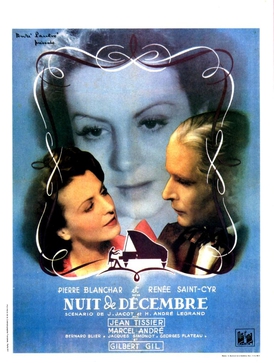
Night in December is a 1940 French drama film directed by Curtis Bernhardt and starring Pierre Blanchar, Renée Saint-Cyr and Gilbert Gil. It was shot at the Billancourt Studios in Paris. The film's sets were designed by the art directors Henri Ménessier and Jean d'Eaubonne. It was Bernhardt's last French film before he left the country for America. It was given a re-release by DisCina in 1949.
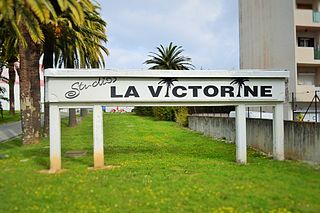
Victorine Studios are a film studio in the French city of Nice. They are also known as the Nice Studios. Several small studios have also existed in the city.
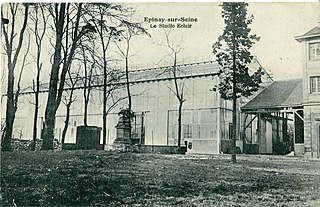
The Epinay Studios are film production studios located in Epinay in northern Paris. It was a complex with two distinct and separate structures. The earliest was built in 1902 by Eclair Film. A second studio was controlled by the French subsidiary of the German company Tobis Film. These were converted for sound in February 1929. The same year the other studio was acquired by Pathé-Natan.

Black and White is a 1931 French comedy film directed by Marc Allégret and Robert Florey and starring Raimu, André Alerme and Louis Baron fils. Described as a "feeble racist comedy" it was the feature screen debut to the comedian Fernandel. It is an adaptation of the 1922 play of the same title by Sacha Guitry, who wrote the screenplay.
André Paulvé was a French film producer. He established his own production and distribution company DisCina with Michel Safra in 1938. During the German Occupation of France after 1940 he based himself at Nice in the Unoccupied Zone. He was a pioneer in co-productions with Italy, establishing a link with the Cinecitta Studios in Rome.

A Caprice of Darling Caroline is a 1953 French historical comedy film directed by Jean Devaivre and starring Martine Carol, Jacques Dacqmine and Marthe Mercadier. It is based on the 1950 novel of the same title by Jacques Laurent. It was the sequel to the 1951 hit Darling Caroline. It was shot at the Boulogne Studios in Paris. The film's sets were designed by the art director Jacques Krauss. It was one of the first French films to be shot in Technicolor.
The Saint-Laurent-du-Var Studios were film studios located in Saint-Laurent-du-Var on the French Riviera, in the suburbs of Nice. They were one of two studios in the city along with the nearby Victorine Studio complex.

The Lady of the Camellias is a 1953 French-Italian historical drama film directed by Raymond Bernard and starring Micheline Presle, Gino Cervi and Roland Alexandre. It is based on the 1848 novel of the same title by Alexandre Dumas. It was shot in Gevacolour at the Billancourt Studios in Paris and on location around the city. The film's sets were designed by the art director Léon Barsacq.

The Francoeur Studios are film production studios in Paris. In 1926 Bernard Natan's Rapid Films set up production at the location, before in 1929 it was merged with the Pathé conglomerate under Natan's overall control. In the postwar era it was part of the Franstudio complex along with the Joinville and Saint-Maurice Studios. In the 1970s it was used for shooting television. Since 1999 it has been the headquarters of La Fémis.

The Last of the Six is a 1941 French mystery thriller film directed by Georges Lacombe and starring Pierre Fresnay, Michèle Alfa and Suzy Delair. It was shot at the Billancourt Studios in Paris. The film's sets were designed by the art director Andrej Andrejew. It is based on the 1931 novel The Six Dead Men by the Belgian writer Stanislas-André Steeman.
